Psilocybin, the psychoactive compound found in certain species of mushrooms, has been a subject of fascination and controversy for decades. So-called "magic mushrooms" have a storied history, not only spiritually and culturally, but also of research into their potential therapeutic benefits.
As inquiry into the medical and psychological benefits of psilocybin continues to grow, so does the curiosity about its recreational use, particularly in the form of psilocybin chocolate bars and microdosing psilocybin chocolates.
In this article, we delve into the intriguing world of psilocybin mushroom chocolates, exploring their effects, uses, and the culture and legality surrounding them. Join me as we unwrap the layers of psilocybin mushroom chocolate bars and discover what lies beneath the foil of these mind-altering treats.
Disclaimer: as with everything on this site, this article is provided for information only and does not constitute legal or medical advice. I strongly urge you to speak with your doctor or a licensed medical professional in order to assess whether or not various foodstuffs should be a part of your diet.
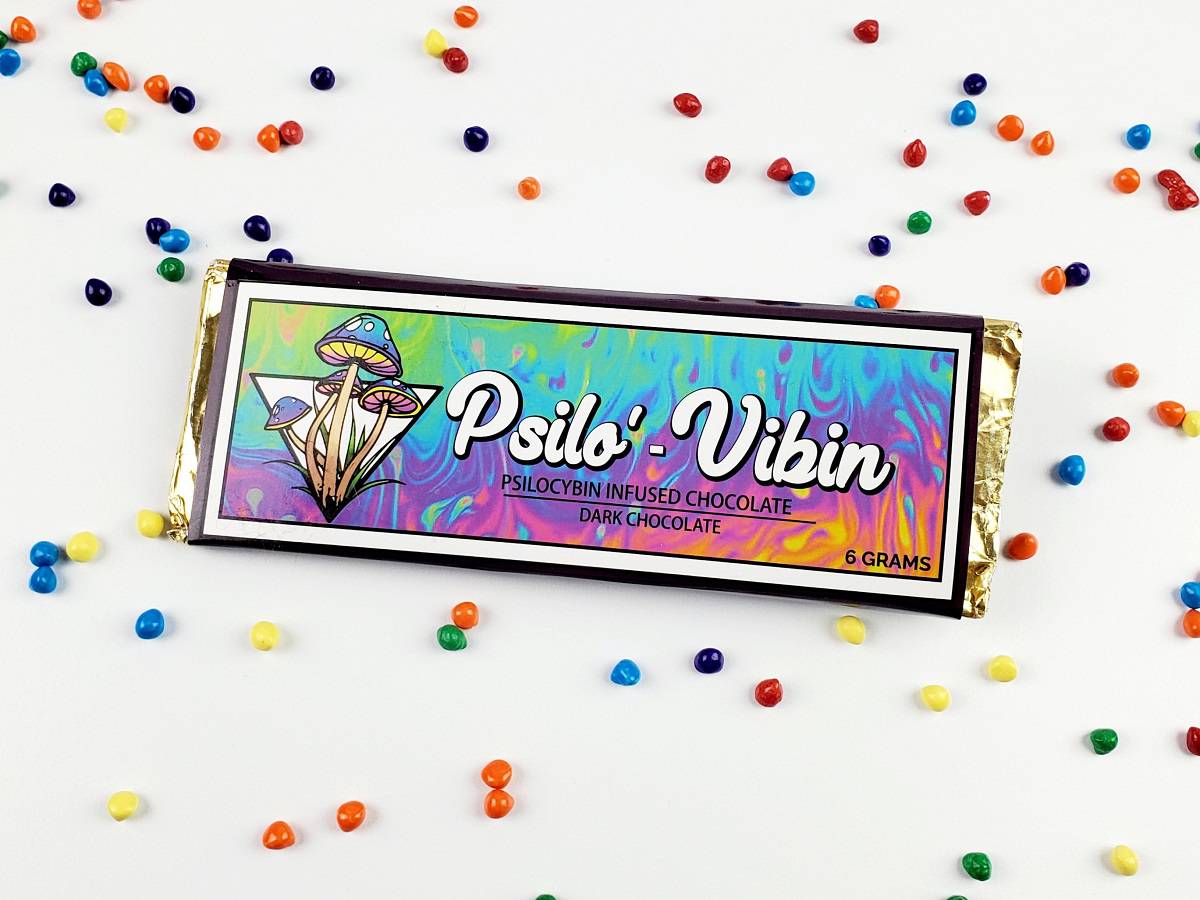
Jump to:
📚 History of Mushrooms & Chocolate
Mushrooms have long been an intrinsic part of human society, with various cultures having used them for their culinary, medicinal, and even spiritual and hallucinogenic applications.
They've often been consumed alongside other functional foods such as cacao, so consuming chocolate with mushrooms is nothing new. For example, the extremely rare and precious variety of cacao, criollo, has long been praised and used by the Mayans and Aztecs for its exceptional flavor and aroma.
In that same era mushrooms, such as truffles and morels, were rare and thought to have distinctive flavors, and thus were mainly reserved for those with refined palates and deep wallets.
Magic Mushroom and Cacao in Ancient Cultures
The Ancient Greeks, as another example, drank ergot mushrooms and claimed to have had visions from them. They also believed these mushrooms could provide their warriors with the strength they needed in battle.
The Egyptians and Romans even revered mushrooms as "Food of the Gods'' as they believed these mushrooms could grant them immortality.
Whereas the Spanish missionary, Bernardino de Sahagun, observed Mesoamerican societies in Mexico ingest peyote (hallucinogenic mushrooms) to induce trance-like consciousness during healing rituals and religious ceremonies.
In the 1950's, Mayan and Aztec descendants using mushrooms in Mexico revived interest in peyote, which drew the attention of scientists, celebrities, and hippies, who began flocking to Mexico in search of the magic mushrooms.
Cacao also played an important role in Mesoamerican civilizations, with it being used as a culinary treat as well as an essential economic item, as both the Aztecs and Mayans employed cacao beans as currency.
Come the middle ages, medieval Europe distrusted mushrooms and fungi in general, with Vikings turning into madmen when ingesting the “liberty cap” and Christian missionaries deeming mushrooms as cult-forming.
Regardless of its long and vast history in many cultures, many found its effects uncontrollable. Thus, began the ban on magic mushrooms in the U.S. in 1969, with other countries soon following suit.
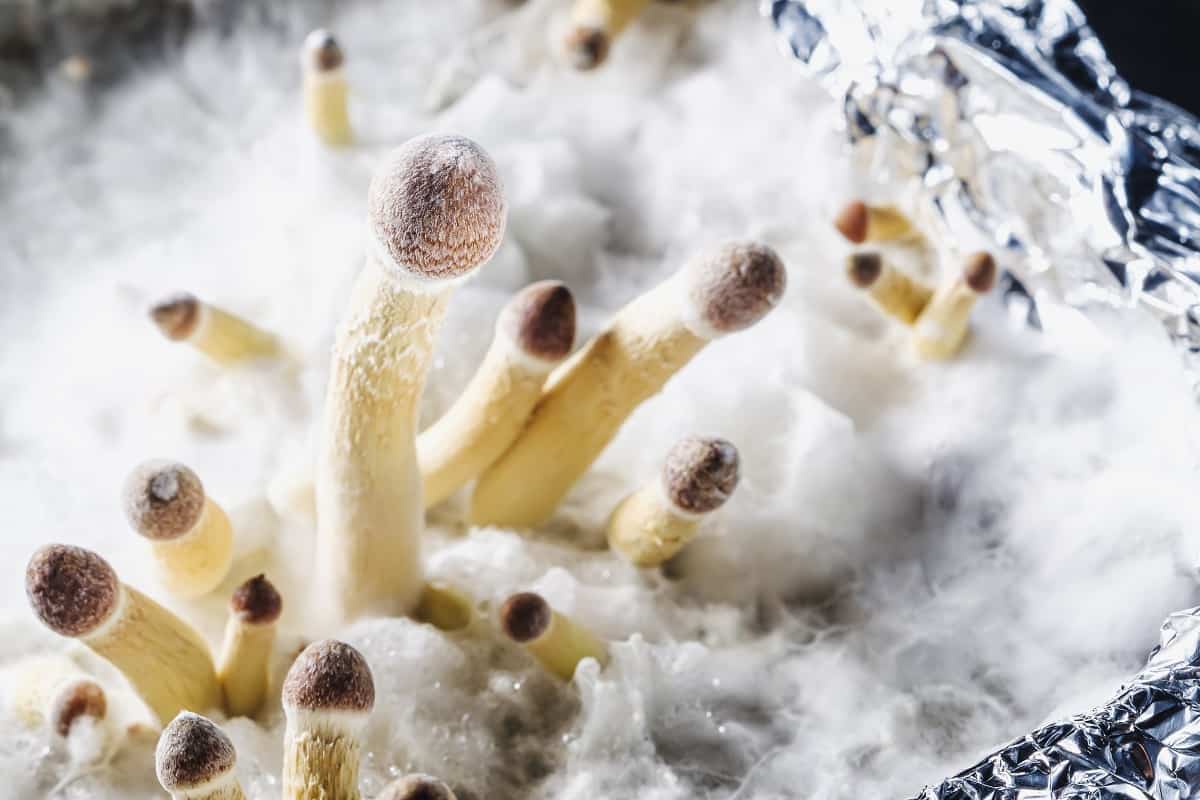
🍄 Three Main Types of Mushrooms
Mushrooms are incredibly varied, with some offering nutrition, others healing benefits, and some being fatally poisonous. Some mushrooms can even catalyze spiritual experiences due to their psychoactive effects.
But all mushrooms we cultivate generally fall into three categories: edible, functional, and psychedelic.
Edible Mushrooms
Edible mushrooms are used in a variety of cuisines globally. From simple button mushrooms to exceptional truffles, these fungi add a distinct umami flavor and a pleasant texture to a wide range of recipes.
Edible mushrooms also act as a significant meat replacement in vegetarian and vegan recipes. Mushrooms such as these are incredibly versatile, as they can be grilled, sautéed, stuffed, or used as a base for soups, stews, and sauces.
Some edible mushrooms even have medicinal properties like shiitake and maitake. I’ll cover these more below, as they're also considered functional mushrooms.
Functional Mushrooms
Functional mushrooms, also known as adaptogenic or medicinal mushrooms, are a distinct group of edible fungi well-known for their various health benefits.
A few examples are maitake, shiitake, reishi, turkey tail, chaga, cordyceps, and lion's mane. They’re often used as superfoods for their healing and therapeutic properties but are not psychotropic and have no mind-altering properties.
Psychedelic Mushrooms
Psychedelic mushrooms, also known as psilocybin or ‘magic mushrooms,’ have naturally occurring psychoactive substances called psilocybin and psilocin. These mushrooms can be acquired fresh, dried, powdered, in oils, or in growing kits.
When ingested, they can elicit an altered state of consciousness, intense experiences, and other symptoms. Ancient cultures throughout the world have been using magic mushrooms for spiritual and medicinal applications.
But nowadays they aren’t regulated, and are often subject to misuse, particularly by children. Due to their hallucinogenic effects, magic mushrooms are illegal in many countries with international regulation and control under the U.N. Drug Control Conventions.
The US DEA lists magic mushrooms as Schedule I drugs, and according to federal law, no prescriptions for Schedule I substances may be made, meaning they aren’t widely available for clinical use.
However, the recreational use of psychedelic mushrooms is gaining ground, with studies showing encouraging results for treating disorders such as smoking, alcohol, and opium addiction.
These mushrooms have also gained interest in the field of mental health therapy as research shows positive outcomes for treating various depression and post-traumatic stress disorder (PTSD). Regardless, it’s advised to take psychedelic mushrooms under supervision of a qualified professional.
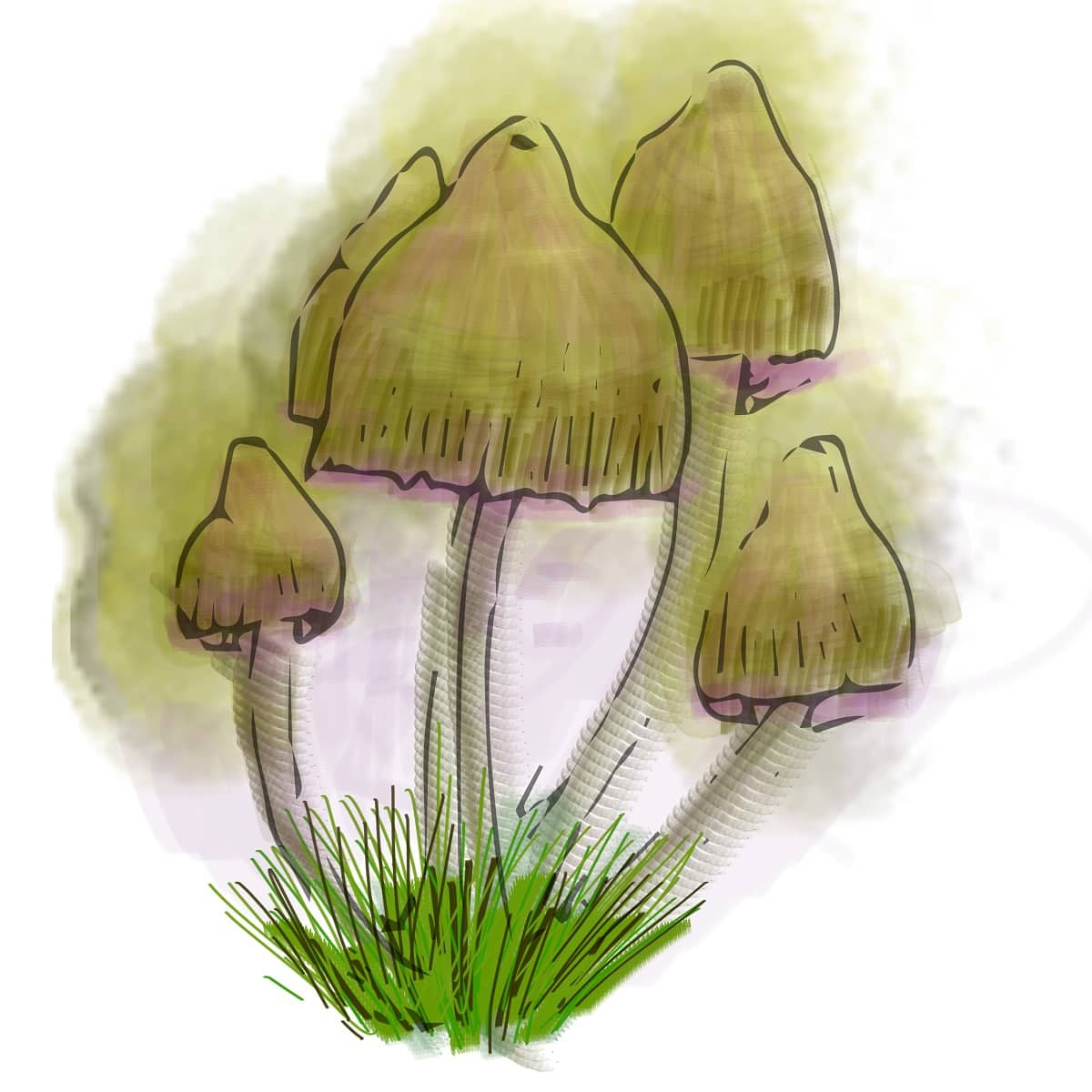
🤯 Types of Psychedelic Mushrooms
There are over 300 species of psychedelic mushrooms, and they are mostly found in the geni of Psilocybe, Panaeolus, Pluteus, Gymnopilus, Amanita, Copelandia, Inocybe, and Pholiotina.
Psilocybe cubensis is the easiest to cultivate. The psilocybin content in Psilocybe cubensis was 0.44%-1.35% in the mushroom cap and 0.05%-1.27% in the stem, while Psilocybe tampanensis is one of the rarest varieties. This rare magic “truffle” is found in Tampa (Florida) and Mexico.
Panaeolus cyanescecens often includes significant levels of psilocybin and psilocin. While the variety, Psilocybe semilanceata, contains varied levels of psilocybin (0.003%-1.15%) and psilocin (0.01%-0.90%).
How Mushrooms are Processed
Mushroom quality immediately declines after harvesting, so it’s essential that their processing is handled with care to preserve their nutrients. Signs include browning, moisture loss, texture changes, microbial contamination, loss of flavor, and nutrient density, many of which aren't visible to the naked eye.
Post-harvest preservation techniques maintain quality and extend the shelf life of mushrooms, with drying magic mushrooms being an essential step in keeping their flavor and potency.
Pre-drying is a necessary step for removing excess moisture from fresh mushrooms before properly drying them. While air-drying mushrooms is the easiest, it’s difficult to manage consistently.
Dehydrating them or drying them with a desiccant (like silica gel) is ideal. After that, the active ingredient is typically extracted, purified, mixed with different excipients, and preserved in order to be able to make magic chocolate bars.
After processing, mushrooms can be stored for up to a year in a cool, dry, and dark space. It’s ideal to tuck them away in the back of your cupboard and surround it with silica gel.
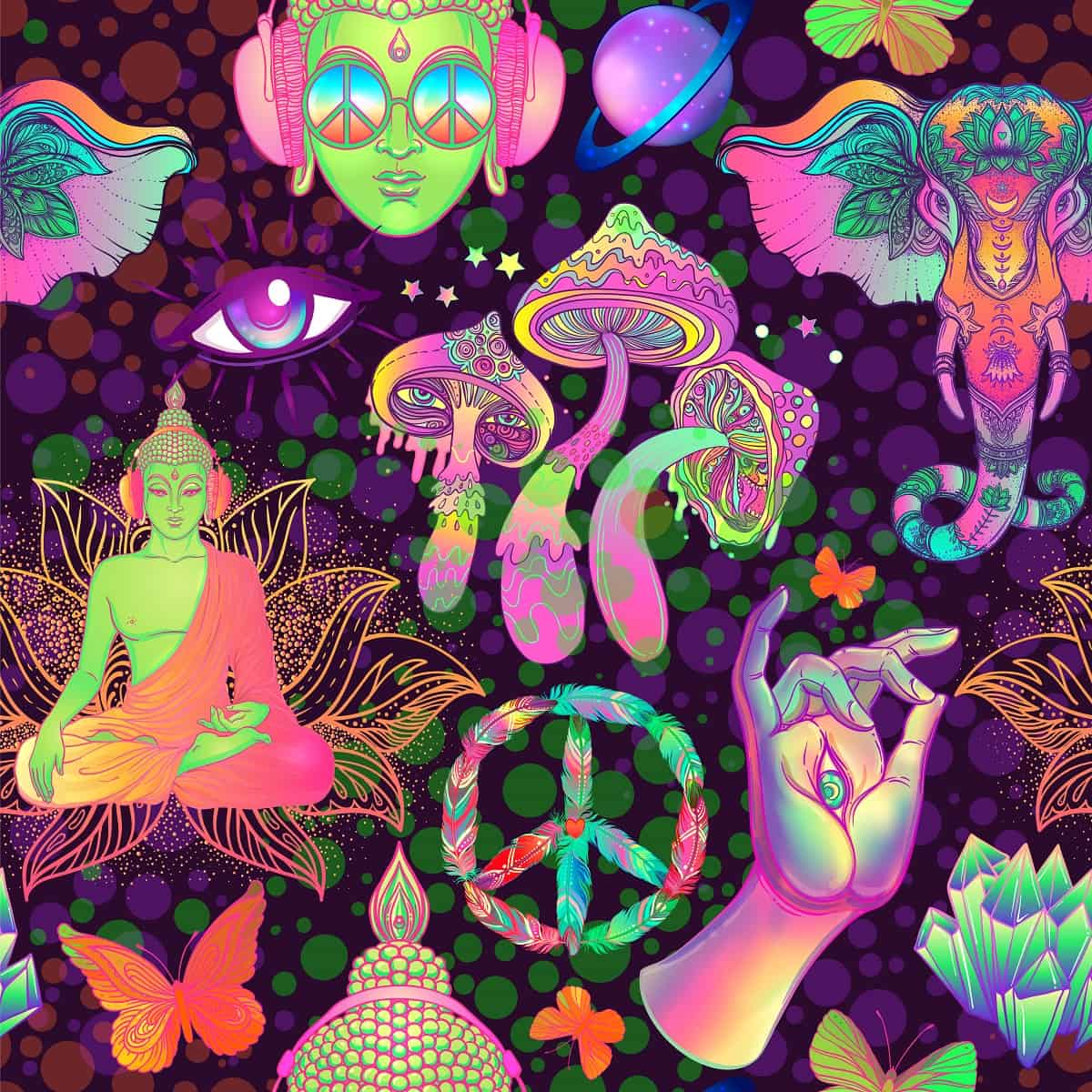
🍫 Psychedelic Mushroom Bars
The flavor of magic mushrooms is earthy and slightly bitter, so over the years it was incorporated into recipes that would mask this somewhat unpleasant taste.
Some well-known magic mushrooms chocolate bar brands are PolkaDot, Dreamland Psychedelics, Wonder Bar by Fun Guy Chocolates, and Shroomiez, and are sold online in Canada and the U.S.
Reports have also shared that smoke shops in East Village N.Y. openly sell them, which shops in DC seem to, as well (I've only ever tried ones from Denver and Oregon). You can also buy magic mushroom chocolate bars on Etsy!
Though I’d personally wait and go to a state where it’s legalized before I’d buy something that ships across state lines. Elsewhere in the world, look to Europe and South America for your mushroom chocolate and magic mushroom needs.
On Microdosing Psilocybin
The mind-altering effects of chocolate “shrooms” are dependent on consumption. Hence, people look to microdosing to improve their well-being without experiencing an “out of mind and body trip,” and recommended dosage vary widely.
Magic Mushroom Dosages
The best magic mushroom dosage depends on the species and their potency. Recreational doses range from 1 to 5 grams of dry mushrooms and 10-50 grams of fresh mushrooms.
Mushroom powder in a capsule contains 50 to 300 mg of the hallucinogenic chemical psilocybin. The most well-known psychedelic effects begin after a full dose or ten times that amount, though this amount varies widely.
Factors include how much was consumed as well as what other foods were consumed with it. This is specifically where microdosing, or ingesting little, non-hallucinogenic doses, comes into play. Let’s take a look at how the primary element in magic mushrooms work.
Psilocybin activates serotonin receptors in the prefrontal cortex of the brain. This is the part of the brain responsible for cognition, perception, mood, panic, and arousal. Hallucinogens such as psilocybin cause alterations in perception, emotion, and thinking.
In microdosing, psilocybin does not always result in active auditory or visual hallucinations. Instead, it distorts how people view persons and items that are in their environment.
Psilocybin is enzymatically transformed to psilocin after consumption. Absorbed through the gastrointestinal tract, effects typically begin within 10-30 minutes of consumption.
They last anywhere from 4-6 hours. Changes in cognitive patterns and sensory perception can linger for a few days in some persons, though I generally just find I feel sleepy at that amount after microdosing.
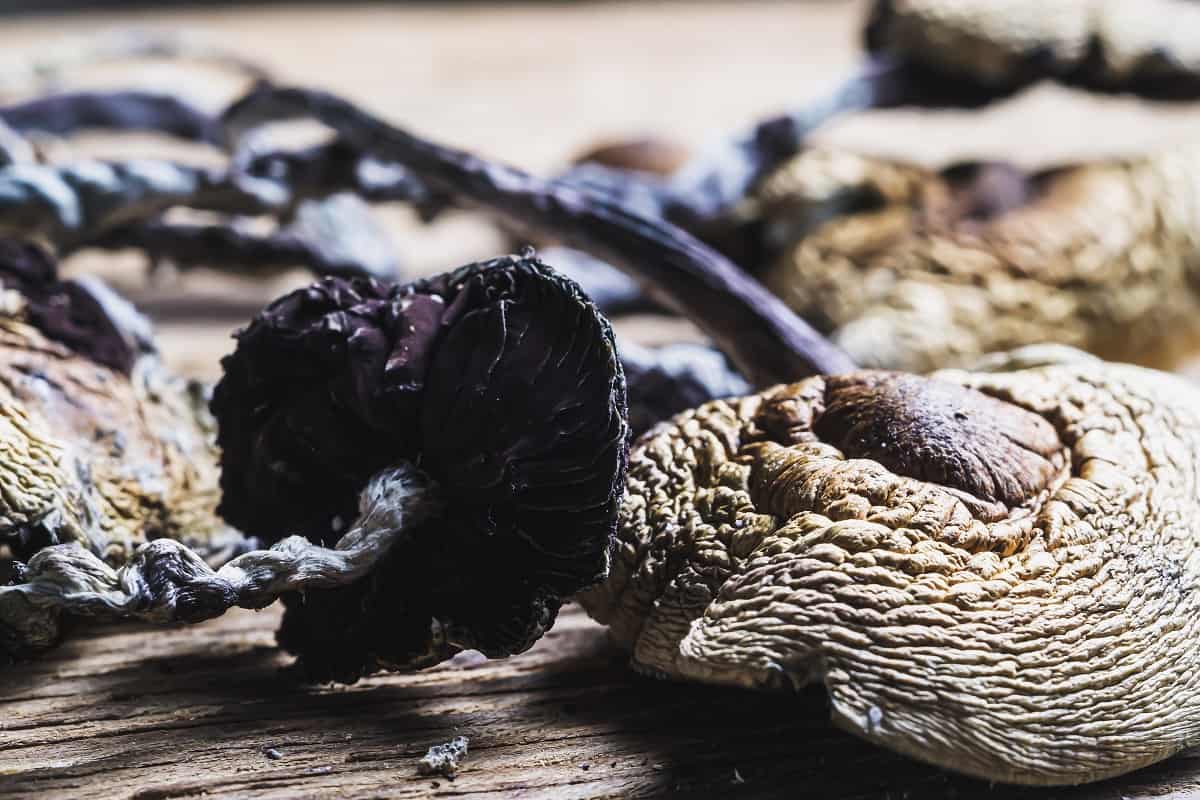
💡 The Pros and Cons (Chart)
The use of mushroom chocolate is still a contentious issue and illegal in many countries as people's reaction to mushroom chocolates varies.
Some see it as a natural and safe alternative to medications for treating mental health disorders, while others are skeptical about the consequences of using a psychoactive substance.
Despite this, companies are marketing magic mushroom products due to the increasing demand. However, the consumption of psilocybin mushrooms is still illegal at the federal level in the United States.
This is because these products are simple to misuse; in some cases, the consumption of magic mushrooms can lead to "bad trips" or "flashbacks." Even when used under supervision, hallucinogens pose a risk to the user since they have a mind-altering impact.
An overdose may even result in anxiety and panic attacks. Taking these kinds of mushroom chocolate in excess may be harmful, and consumption should be under the guidance of a qualified professional.
The amount of the substance that a person consumes must be monitored. Expectations and mental preparations as to how the drug would affect them should also be well set. Here’s a short run-down of the pros and cons of microdosing.
| PROS (Potentially) | CONS (Potentially) |
| Positive effects such as better focus and motivation, increased energy, wakefulness, and concentration. | Negative effects may include paranoia, confusion, distressing thoughts, and experiences. |
| Positive outcomes from several studies. | Lack of clinical trial research to prove its efficiency. There’s no definitive proof of its safety. |
| Sustained microdosing produces good effects. | There’s no exact dosage for microdosing. |
| With mental clarity comes increased-problem solving skills. | Benefits may be the result of a placebo effect. |
| Mood enhancer and aids in managing depression. | Long-term use of psilocybin may lead to heart valve damage. The heart valves control the blood flow to and away from the heart. |
| Psilocybin isn’t known to cause negative causal effects like dependence, craving, or withdrawal symptoms. | Psilocybin’s ability to induce highs and hallucinations may lead to psychological dependence. |
| You can easily source it online, or at least find pages where it's for sale. | You can’t buy it mainstream. It’s not regulated. No FDA approval yet. |
| Psilocybin isn’t standardized because it occurs naturally in nature. Different varieties, parts of the mushrooms, and processing have varying effects. |
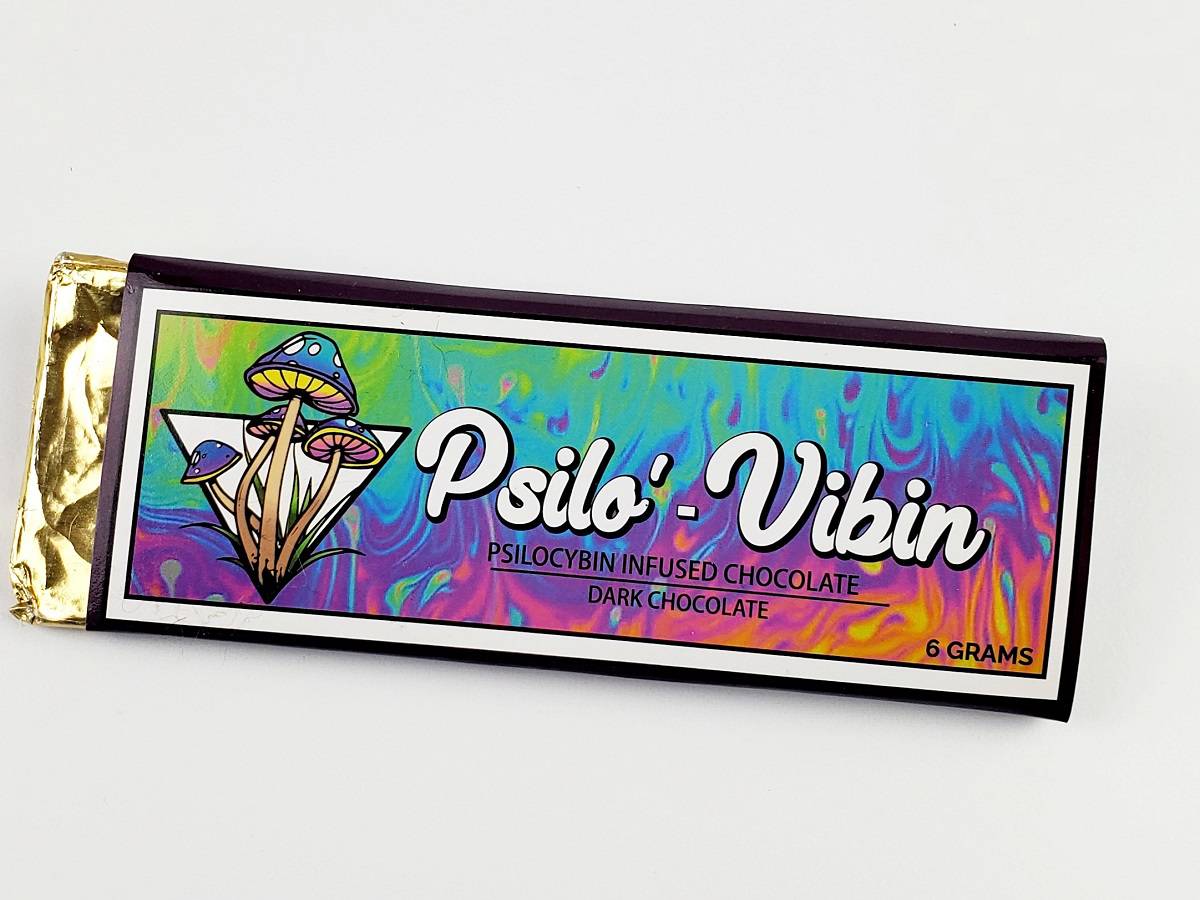
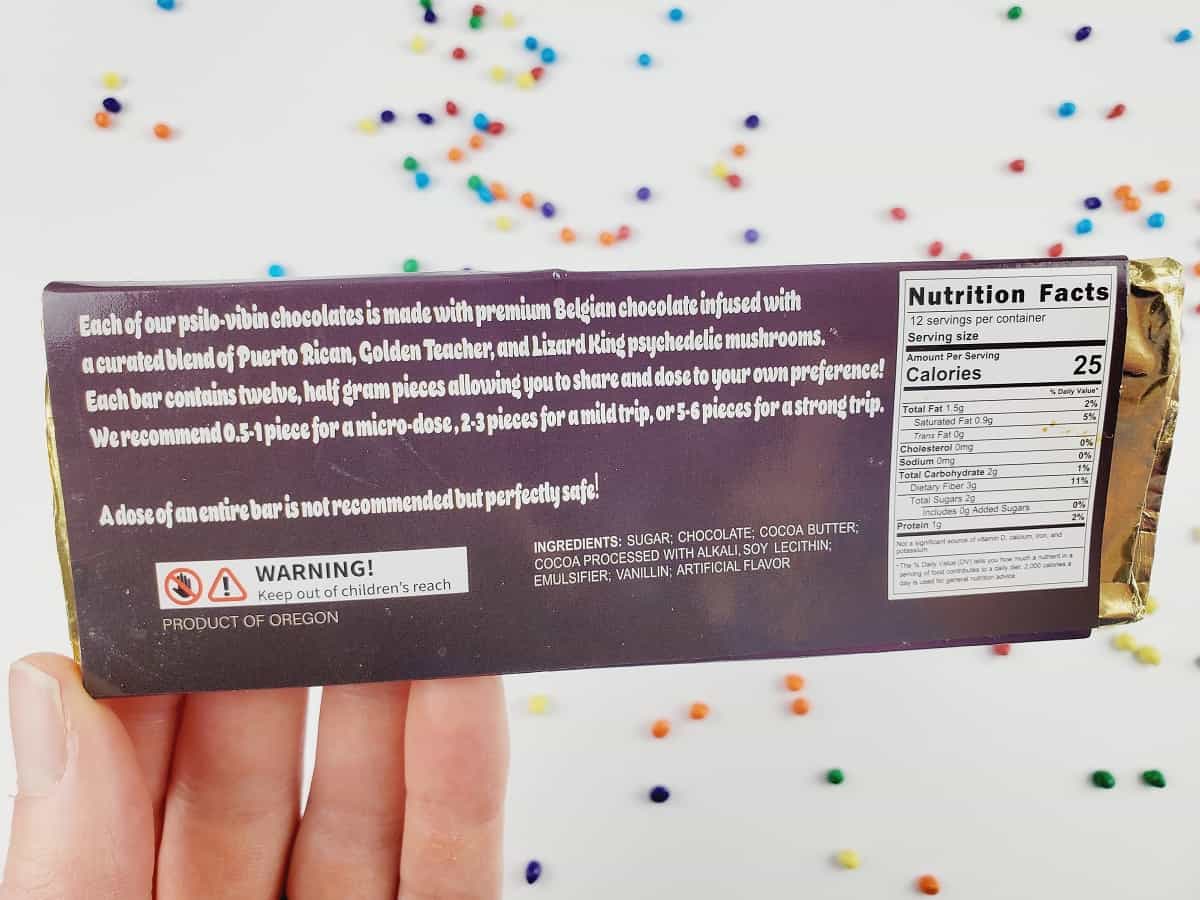
⭐ Where is Psilocybin Legal?
Psilocybin-containing mushrooms grow abundantly across the world (except in Antarctica), with China currently being the world’s largest mushroom producer.
According to Statista, China was the leading producer of mushrooms and truffles in 2021, with an estimated production of 41.1 million metric tons. While Japan and Poland trail far behind, they still produce an estimated 469 and 378 thousand metric tons of mushrooms, respectively.
Despite the growing evidence of their beneficial effects and mass production, magic mushrooms are illegal in many countries throughout the world. But times are changing, and there are now a few countries that have legalized or decriminalized the use of magic mushrooms.
I’ve listed here those that have made the exemption to use magic mushrooms for clinical trials and some that recognize its use in cultural and religious practices, despite being still largely illegal. Keep in mind that psilocybin laws are continually evolving and vary by country and location.
✔️ Legalized
Nepal
In Nepal, magic mushrooms grow naturally. It has evolved into a vital component of the country's cultural identity. While psilocybin mushrooms are completely lawful in Nepal, they are not controlled or aggressively sought as an economic strategy.
Psilocybin mushrooms are not sold in stores, but they can be lawfully held, sold, and supplied. Instead, magic mushrooms are grown and sold in informal markets.
United States
In the States, the recreational use of magic mushrooms has been trending largely due to the growing popularity and legalization of their usage in some states.
Magic mushrooms are currently legal in two U.S. States - Oregon and Colorado, while it’s decriminalized in some cities like San Francisco, and Santa Cruz, Washington D.C., Oakland, East Hampton, and Seattle.
In 2018, the U.S. FDA identified psilocybin as a potential “breakthrough therapy” for severe depression. This implies that applications for its use as a medicine will be reviewed more swiftly than usual.
Regardless, they’re still federally banned in the States, so patients with depression are unable to receive treatment unless they participate in a clinical trial.
Australia
Australia has originally only conditionally approved the use of magic mushrooms for the treatment of treatment-resistant depression. But as of July 1, 2023, Australia is now the first country in the world to have legalized psilocybin for medical use.
This, however, doesn’t make psilocybin lawful for personal use or possession. The Therapeutic Goods Administration (TGA) has approved the use of psilocybin for the treatment of treatment-resistant depression (TRD) in adults who have not responded to other treatments.
It can only be prescribed by a registered psychiatrist and must be administered in a clinical environment.
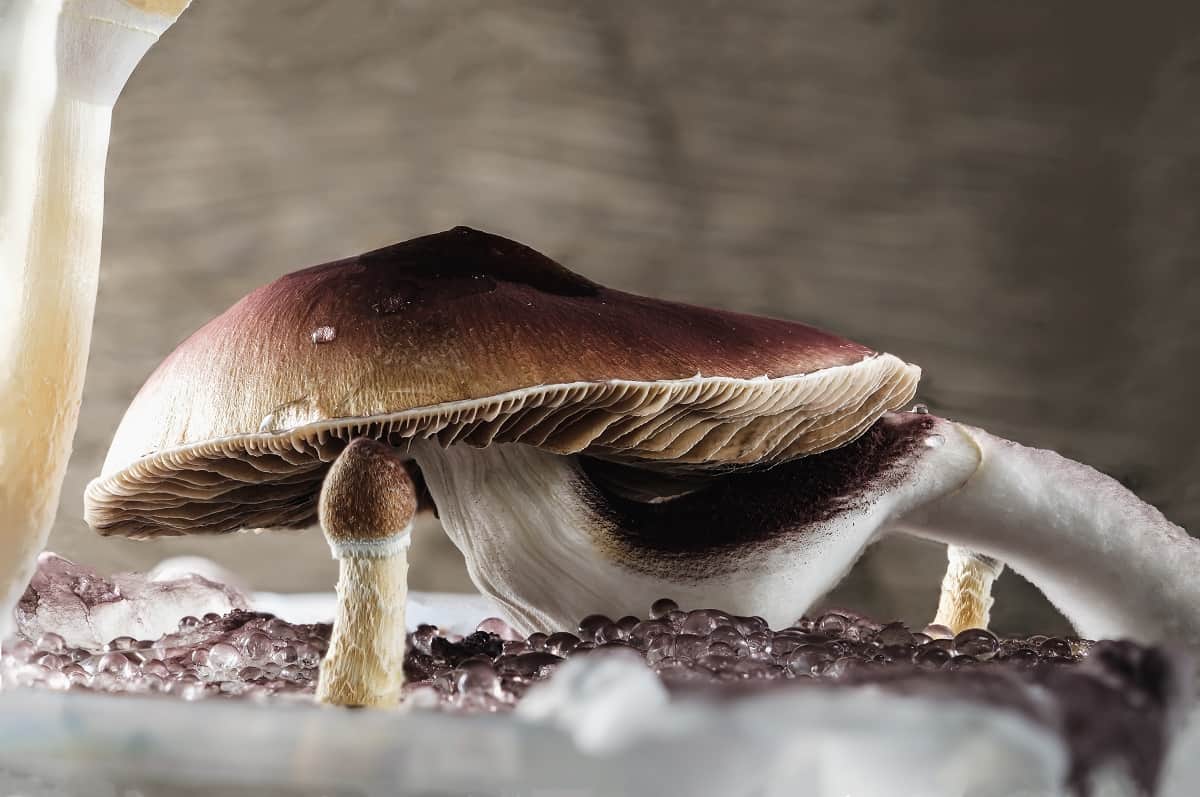
❓ Semi or Pseudo Legal
Jamaica
Magic mushroom retreats can be located in Jamaica. These retreats do not cater to persons suffering from depression, despite the fact that some people attend them for that purpose.
They are recreational, not as regulated, and the sessions may not be led by qualified therapists. Likewise, psilocybin use is lawful in Jamaica for religious purposes within the context of the Rastafari movement.
The manufacturing and selling of magic mushrooms was an underground economy until recently. In 2021, the first retail store peddling psilocybin opened in the country, and psilocybin healing centers popped up soon after.
Thailand
Thailand is at the forefront, if not in Asia, of recognizing and evaluating the benefits of psilocybin at a time when psychedelics are on the cusp of becoming mainstream. Thailand, like Australia, is considering formally recognizing the medical uses of hallucinogenic mushrooms.
The Narcotics Control Board of Thailand declared that Khon Kaen University would cultivate magic mushrooms for study at a number of universities. The findings of the study would be used to evaluate delisting psilocybin as a prohibited substance, potentially paving the way for decriminalization.
And, for the time being, while it is not difficult to locate magic mushrooms for sale online as visitors return in force, using them is still punishable by a year in prison. Selling mushrooms can result in a 15-year prison sentence.
Netherlands
Psilocybin mushrooms are illegal in the Netherland, though magic mushroom retreats are common there.
This is because the sale and usage of “magic truffles,” which contain psilocybin, is lawful, so it’s a loophole in the law, really. But it has paved the way to a thriving psilocybin-assisted therapy and retreat scene.
The British Virgin Islands
Magic Mushrooms naturally grow in the British Virgin Islands. It is allowed to own and consume magic mushrooms here though their sale is still illegal. It’s simply largely ignored as many businesses openly sell them for tourism purposes or recreational use.
Bahamas
In the Bahamas, however, psilocybin mushrooms are legal to grow and sell. They provide various health and wellness retreats.
Psilocybin and psilocin, on the other hand, are considered illicit substances under the United Nations Convention on Narcotic Drugs, to which the Bahamas is a signatory.
St. Saint Vincent and the Grenadines
The Caribbean government legalized the manufacturing and transportation of all psychedelics, including psilocybin, as well as treatment and research, in 2020. Med Plant Science was granted the first license to develop psychedelic chemicals in the country.
Mexico and Peru
In Mexico, people can attend psychedelic healing facilities semi-legally. Additionally, psilocybin is also legal to consume and possess in Peru due to its rich psychedelic history and well-known shaman-led ayahuasca retreats.
Canada
Magic mushroom cultivation, sale, and possession are all currently prohibited in Canada. It can only be accessed through three channels: signing up for Health Canada’s special access program, clinical trials, or certain exemptions.
Despite this, magic mushrooms are openly sold online or through dispensaries in some cities. These include Ottawa, Vancouver, and Toronto, though Toronto is being slammed by the authorities to shut down their dispensaries.
Authorities are more lenient in B.C. Canada, though they're said to be gradually moving toward a legal, medical model, while states and cities in the United States are decriminalizing.
Brazil
Brazil’s legislation declares psilocybin and psilocin illegal. However, this only applies to the molecules, not the mushrooms that contain the molecules. Psychedelic mushrooms are loosely legal, but they’re sold in informal markets.
And so far, no arrests for the consumption, possession, or production of magic mushrooms have been made in the country.
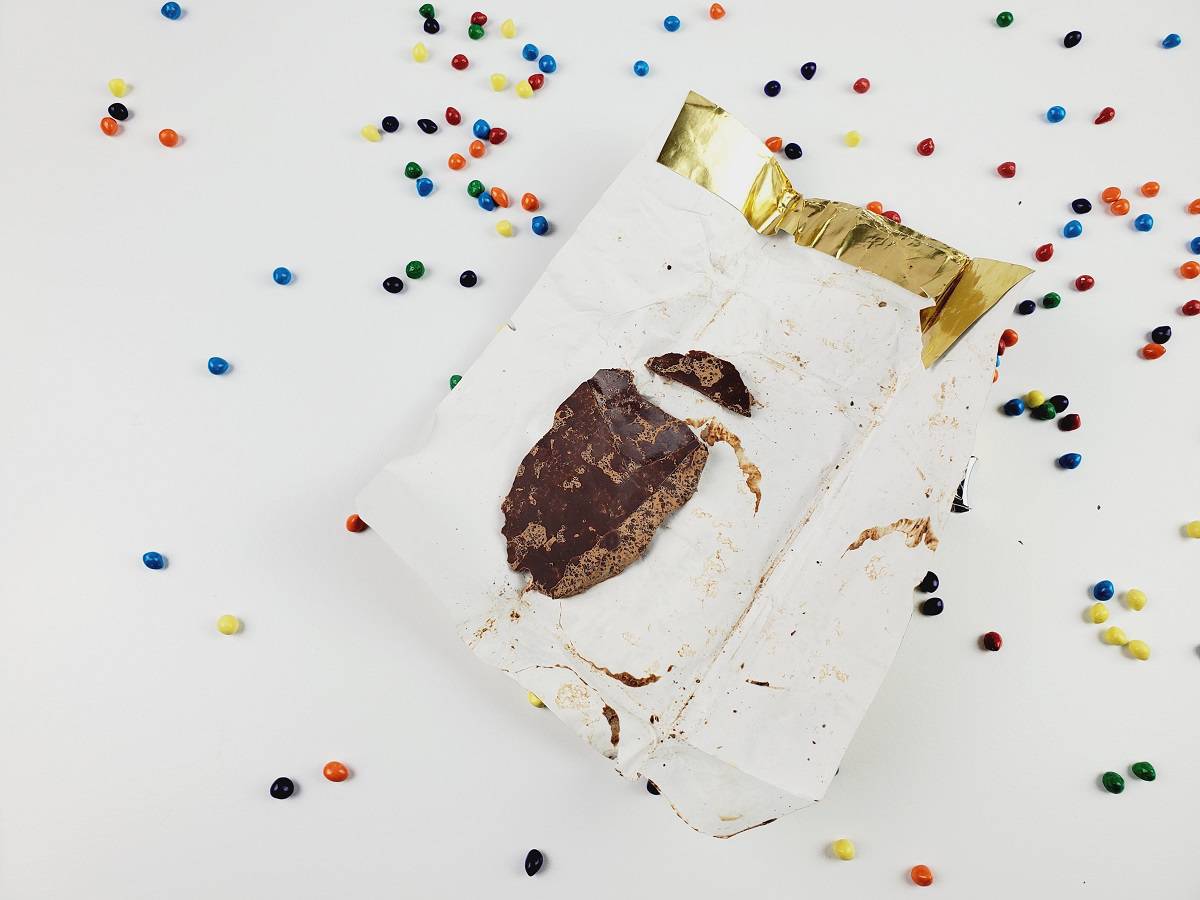
🌟 Decriminalized
Austria
In 2016, Austria decriminalized the possession and personal consumption of psilocybin mushrooms. Cultivation is lawful as long as mushrooms are not harvested, but sale and transportation are still prohibited. Psilocybin mushrooms are still classed as controlled narcotics under their Narcotics Act.
Portugal
Portugal was the first country to decriminalize the possession of small amounts of all drugs, including psilocybin, back in 2001. Individuals caught in possession don’t face criminal charges but may receive drug treatment and support programs as a sentence.
Czechia
Czechia decriminalized the possession of small amounts of psilocybin mushrooms for personal use way back in 2009. According to the law, an individual may carry up to '40 pieces' on their person, and if caught with this amount, they will suffer a misdemeanor rather than a criminal record. The same goes for Czech chocolate, if it contains mushrooms!
Spain and Uruguay
Personal possession and consumption of psilocybin mushrooms (in private spaces) is decriminalized in Spain, while Uruguay has also decriminalized the use of magic mushrooms.
🎓 Medical Studies
Scientific research has attempted to look at the potential therapeutic effects of magic mushrooms. In 2016 one study found that a single dose of psilocybin produces significant improvements in anxiety and depression in patients with life-threatening cancer.
While another study examined the 5-HT2A receptor agonism of psilocybin, which may be a valuable supplement to currently available treatments for depression.
Through the years, recent studies have come out to suggest that psilocybin-assisted therapy may be a promising treatment option for various mental health disorders. In one trial, psilocybin-assisted therapy was found to be useful in lowering symptoms of post-traumatic stress disorder (PTSD).
While another found that psilocybin-assisted therapy was successful in lowering symptoms of treatment-resistant depression in small and large group patients. But more studies are needed to fully appreciate its potential therapeutic advantages and disadvantages.

🙋🏻♂️ Frequently Asked Questions
There are psychedelic mushroom chocolate bars legal in a few jurisdictions around the world, with decriminalization or legal therapeutic use in places like Oregon, Denver, Oakland, and Santa Cruz in the United States, as well as the Netherlands for certain truffle varieties. However, they remain illegal under federal law in the United States and in many other countries.
Mushroom chocolates can be dangerous, particularly because they contain psilocybin, a psychoactive compound that can lead to altered perception, psychological effects, and potential health risks, especially if consumed by children or individuals with mental health conditions.
Mushroom chocolates are popular among some users because they offer a palatable and convenient way to consume psilocybin, which is sought after for its psychoactive and sometimes therapeutic effects. Their popularity is also due to the growing interest in psychedelic substances for their potential benefits in mental health treatment and personal growth experiences.
Yes, mushroom chocolate bars are real products that combine psilocybin from magic mushrooms with chocolate to mask the bitter taste of the mushrooms. They are part of a grey market in regions where psilocybin is not strictly regulated or where there is a push for decriminalization, but they remain illegal under federal law in places like the United States.

















Puck
This was an incredible read, I just wanted to thank you for writing something so informative. I had no idea!
Max
My pleasure, Puck! I'm glad you found it interesting. 🙂
Jim
This was very informative. Thank you for going so detailed into everything, a sI can't find anything else this comprehensive. Keep it up.
Max
Thanks, Jim! I'm glad you found it helpful.
Kent Megown
Thank you so much for covering the promising possibilities in treating emotional issues like depression and PTSD with natural remedies. As research advances, it's essential to handle use of these mushrooms cautiously and under professional supervision, but it's not always done like that.
Max
My pleasure, Kent! Thank you for your thoughtful comment.